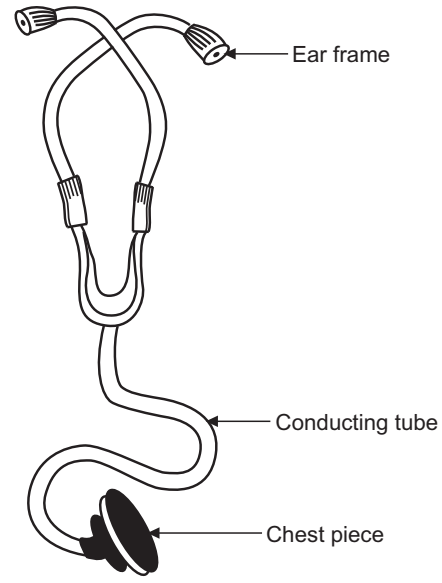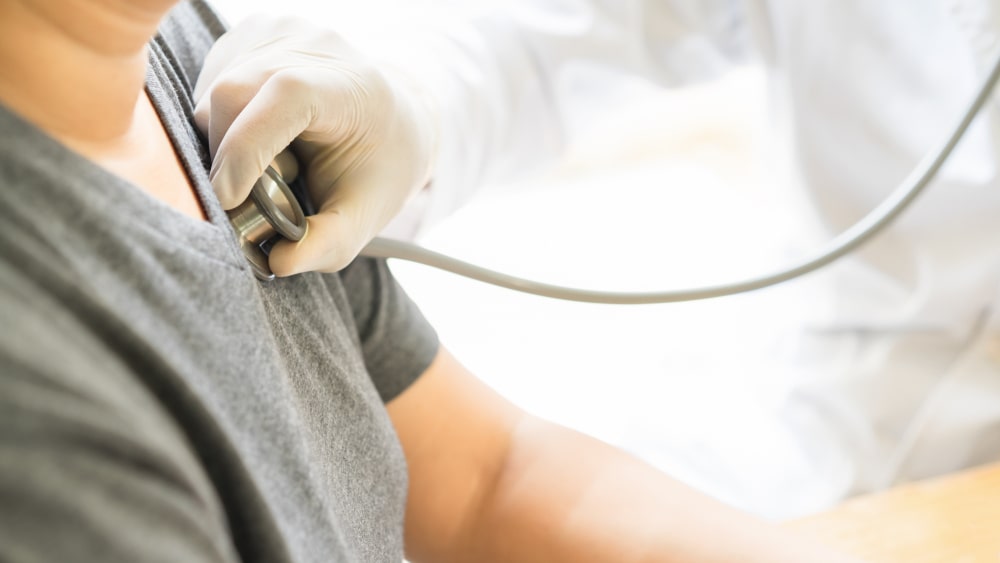Aim: To determine the heart rate.
Requirements: Stethoscope.
A stethoscope is an instrument used for listening to sound produced inside the body with amplification. The commonly used stethoscope consists of:
- Ear frame consists of two curved metallic tubes joined together with a flat ‘U’ shaped spring which keeps them pull together.
- Conducting tubes are simple flexible and soft pressure tubes of rubber or latex material.
- Chest piece consists of a bell and flat diaphragm which causes an amplification of the body sound.

Principle: The number of heartbeats recorded per minute is called heart rate. The heartbeat is normally initiated by impulses generated in the sinoatrial (SA) node. The rhythm is determined by the route of impulse transmission through the conducting system. It is usually measured by a stethoscope but more specifically determined by electrocardiogram (ECG).
Increased heart rate above normal is tachycardia and decreased heart rate below normal is bradycardia.
Procedure:
- Select the subject and make him/her sit comfortably on the chair.
- Place the chest piece of the stethoscope against the thoracic wall.
- Record the heartbeat for 1 minute.
- Take three readings at the interval of 5 minutes and calculate the mean heart rate.
Note: Normal values of heart rate/minute:
- Foetus: 140-160 beats.
- Children: 140 beats.
- Adults Males: 64-74 beats.
- Adults Females: 72-80 beats.
Observation table:
| Sr. No. | Observation Number | Heart rate (beats/min) |
| 1. | 1st reading | |
| 2. | 2nd reading | |
| 3. | 3rd reading | |
| 4. | Mean |
Result: The heart rate of the selected subject was found to be “x“ beats per minute.
Make sure you also check our other amazing Article on : Platelet Count of Blood
